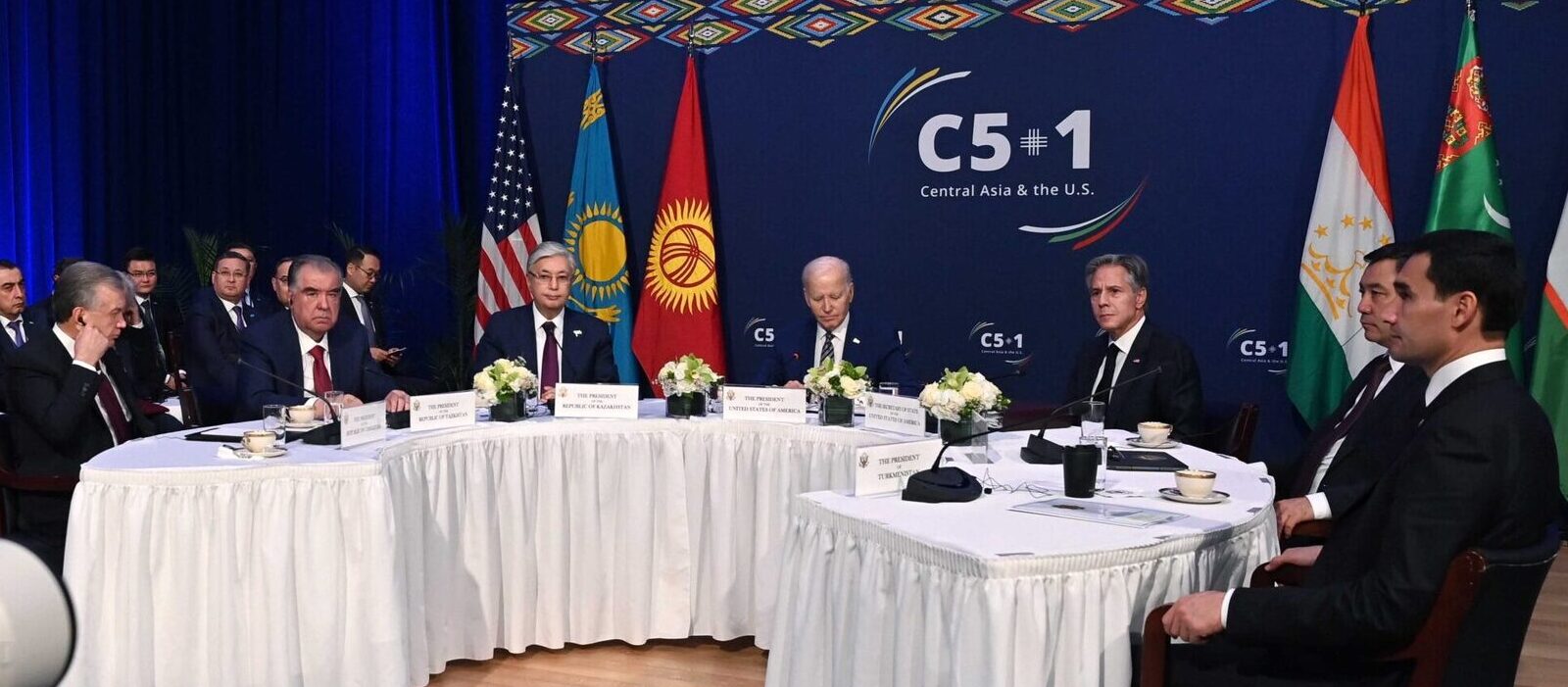Paul Stronski, PhD, Georgetown University, the USA
Russia’s war in Ukraine has exacerbated security risks in Central Asia and is pushing Washington to refocus some attention to the region, as seen with Secretary of State Antony Blinken’s trip to Kazakhstan and Uzbekistan in early 2023. The overarching goals for the United States in the region remain consistent with the past, albeit with Afghanistan deemphasized. Senior Biden administration officials today make clear that the U.S. continues to support Central Asians states’ efforts to secure their independence, sovereignty, and territorial integrity—issues that have risen back to the forefront amid Moscow’s brutal war in Ukraine. However, supporting the sovereignty and independence of Central Asian states is not new U.S. policy. Instead, it is consistent with long-standing U.S. national interests in the region and has been a common theme of U.S. policy over the past thirty years across six U.S. administrations.
Foreign policy formation in the United States for the most part falls under the mandate of the executive branch. The U.S. constitution has devolved significant power over domestic issues to the state and local levels, which means that the president has the most leeway in the foreign policy field. The executive branch, for example, drafts national security strategies, appoints senior defense, economic, foreign policy and intelligence officials, and conducts diplomacy on behalf of the United States. There are certainly checks on presidential power in the U.S. constitution. Congress has the power to declare war, enjoys significant power over the budget and must confirm all presidential nominees from the assistant secretary and ambassadorial levels to cabinet officials. Congress also has the power to earmark or dedicate specific funds to defense, foreign or international development programs, essentially forcing the administration’s hand in pursuing a specific policy. This enhances the power of the branch – and those who lobby Congress – in the foreign policy arena.
HOW THIS PLAYS OUT TODAY?
The Biden Administration’s pullout from Afghanistan and the rapid fall of that country to the Taliban damaged the image of the United States in Central Asia; it also undermined the image of the Biden administration as a capable foreign and defense actor among republicans in Congress and many Americans-at-large. In fall 2021, the Biden presidency looked weak and ineffective on the global and domestic stage. However, the fallout from the crisis in Ukraine now provides the U.S. with new opportunities to engage. The administration’s use of intelligence in warning about an impending Russian invasion has bolstered the image and clout of the intelligence community, particularly that of the Director of the Central Intelligence Agency (CIA) Ambassador Bill Burns. A career and highly decorated former foreign service officer, he today performs quiet diplomatic functions as well as being the head of the largest U.S. intelligence agency. Intelligence and security cooperation moving forward will remain an important part of U.S. outreach to partners and allies, including those in Central Asia.
So, how is foreign policy formed in the U.S.? As mentioned above, it is based largely on U.S. interests, as opposed to the whims of a specific president. While the rhetoric of former President Donald Trump on NATO, Russia, democratic values and global trade often was out of sync with traditional U.S. foreign policy, his actual administration did not veer too far off course on many issues, including enhanced sanctions against Russia, support to the Syrian opposition, strong ties with Israel, Taiwan and the U.K, continued NATO expansion (in the Balkans) and a continued U.S. commitment to the C5+1 initiative in Central Asia. That initiative was a signature of the Obama administration, yet it has so far survived through three different U.S. presidents. Even the frictions within NATO of the Trump era turned out to be short-lived. NATO turned out to be surprisingly strong and unified in 2022 when war returned to Europe.
U.S. policy is made through the “interagency process” in which the National Security Council oversees policy formation. The President, National Security Advisor and Cabinet officials may set the tone and priorities, but leave actual policy making to the working levels, particularly in regions where the U.S. has peripheral interests, such as Central Asia. Working-level officials – namely NSC Directors and deputy assistant secretaries of various departments – meet to discuss and propose policy ideas, which the NSC usually brings together in a working paper. The NSC’s overall job is to coordinate the policy making process, develop strategies, and assign tasks to specific agencies with the agencies themselves largely left to develop specific plans of action.
These working papers gradually move up the chain from the working level to the NSC Senior Director/Assistant Secretary level, and then up the chain all the way to the “Deputies’ level” (consisting of deputy Cabinet secretaries) or the “Principal’s level” (consisting of President, National Security Advisor and Cabinet secretaries), where the policies are refined and eventually approved.
Today, the U.S. needs to present itself to Central Asian governments and societies at large as a friendly partner with global clout. Yet, as a geographically distant partner, Washington can and should show itself as neither posing security risks nor possessing aspirations for deep influence in the region, despite Russian and Chinese rhetoric to the contrary. Washington must help mitigate the financial repercussions of the war and Western sanctions as they are exacerbating political and economic insecurity across the Eurasian landmass. That insecurity sadly is reinforcing the region’s autocratic tendencies.
The U.S. and like-minded states also should help bolster Central Asian countries’ ability to shore up their own political and economic sovereignty. However, limited direct U.S. economic or security interests in Central Asia in the post-Afghanistan environment require Washington to temper expectations and avoid the lofty promises of the past. Instead, it should work through friends and allies with growing interests in the region and help Central Asian states bolster their independence and integration into global markets.
Download full paper

